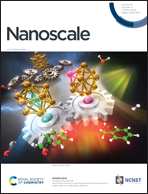Insight into the intrinsic activity of various transition metal sulfides for efficient hydrogen evolution reaction†
Abstract
The electrocatalytic hydrogen evolution reaction (HER) is an efficient approach to convert sustainable energy sources into clean energy carriers, H2. Although various transition metal sulfides (TMSs) have been reported as promising alternatives to precious metal-based catalysts, the top catalyst among TMSs remains unclear as there is a dearth of high-quality studies that provide a ‘fair’ comparison of the performance of these TMSs synthesized and tested under the same conditions. In this work, layered transition metal sulfides (MS2: MoS2, WS2, VS2) and non-layered transition metal sulfides (MxSy: FeS2, CoSx, NiS) were obtained by a straightforward hydrothermal method, and thus a comprehensive platform was established for the comparison of the intrinsic activity of these materials in the HER. Experimental results demonstrate that layered MS2 exhibits better performance than non-layered MxSy in acidic electrolytes, while CoSx and NiS can catalyze hydrogen evolution more effectively under alkaline conditions due to structural reconfiguration. MoS2 shows the best HER performance in both acidic and alkaline electrolytes, particularly in 1 M KOH solution. This work provides guidance for the optimal design of transition metal electrocatalysts, and structural engineering strategies can be used to further enhance their catalytic activity.



 Please wait while we load your content...
Please wait while we load your content...